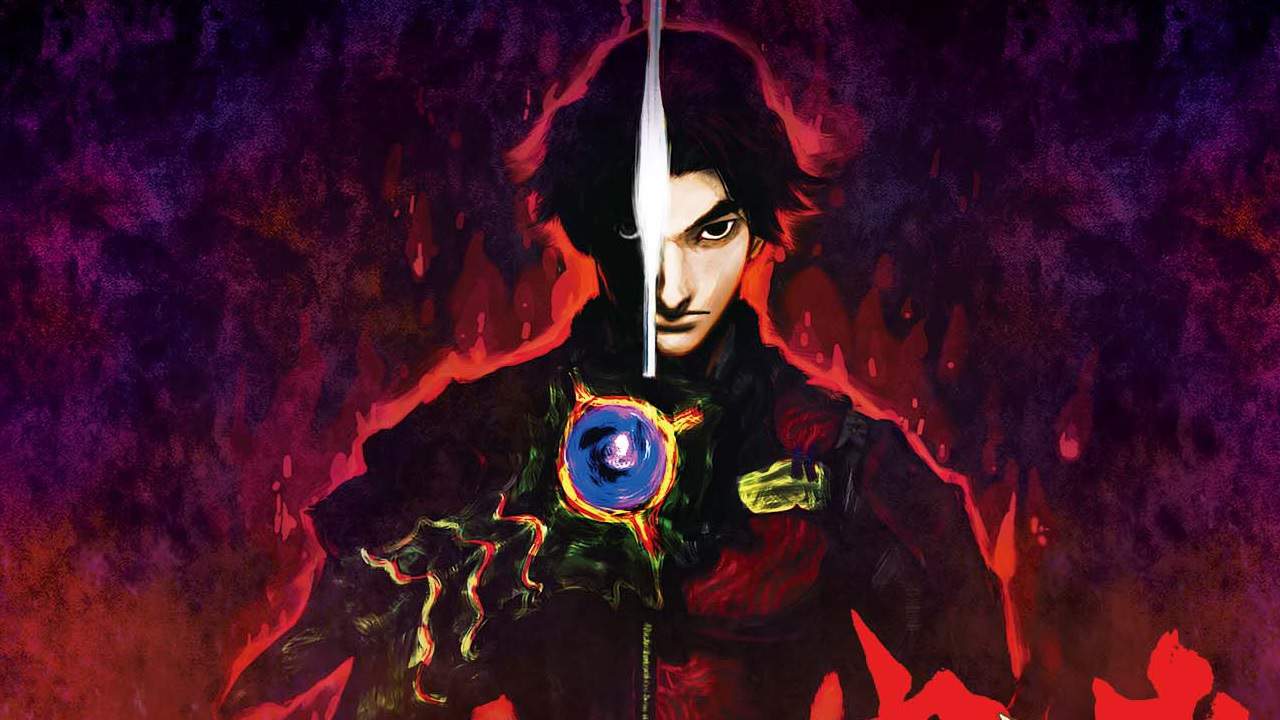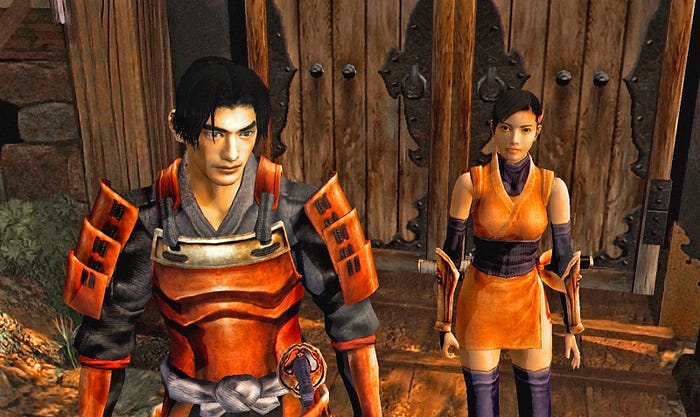Revisiting Onimusha: The Samurai Horror Classic
The action-combat survival horror masterpiece that deserves a resurgence

I recently dove into Resident Evil for the first time. After years of playing through various popular entries in the iconic survival horror franchise, I was able to mesh with Resident Evil Remake in a way that was both satisfying and personally ground-breaking. I’ve long held an artistic appreciation for pre-rendered backgrounds, but fixed camera angles and tank controls have been something of a bafflement. REmake fixed one of these issues for me with its smart inclusion of more traditional analog controls, and after a few hours spent with the game I not only became used to the fixed camera but fell in love with the unique way it forced me to look at its world.
A Unique Take on Survival Horror
In 2001, during the wonder years of Capcom, they released the first game in what would become the Onimusha series. Settling itself somewhere between both Resident Evil and Devil May Cry, Onimusha is a survival horror game of fixed camera angles and terrifying monsters, but gives the player enormous agency by providing a surprisingly responsive action-combat system. As Samanosuke Akechi explores a castle town overrun with demons called the Genma, the player uncovers keys, finds useful tools and overcomes terrifying bosses. As Samanosuke defeats demons, souls can be absorbed and used to power up his swords, enhance healing items or craft ammunition.
What immediately separates Onimusha from other survival horror titles is the combat. It’s relatively simple: commands include block, attack (with subsequent combos), absorb souls, and a special attack. Enemies can be targeted with a soft lock-on via the right trigger. Different swords function as both attack variants and keys, and the game cleverly hides its most unique systems behind player experimentation. Not only can you block, but there is an effective parry system that lets you counter after a successful deflection — as well as the Issen, an instant kill skill the player can execute by attacking an enemy precisely when they strike. Mastering the Issen is difficult but rewarding, and adds a further layer of depth to this extremely satisfying combat.

Souls Before Souls
Years before the Dark Souls series and the recent Sekiro (whose samurai and ninja combat is also immensely gratifying), Onimusha gave players a deceptively deep sword-swinging system that felt more action-oriented than Resident Evil’s simplistic combat and less adrenaline-fueled than Devil May Cry’s combo-centric gameplay. Exploring Inabayama Castle is fun and rewarding because despite the hordes of Genma skulking about, the player never feels overwhelmed or underpowered. Boss fights are deeply satisfying dances where the player must switch between swords for the most effective power and speed, as well as swapping their inherent special abilities to deal more damage. Eventually, Samanosuke gains both a bow and a rifle (which allows the player to deal with ranged enemies) and occasional gameplay segments featuring the ninja Kaede provide the player with brief but gratifying changes in combat.
Outside of its gameplay, Onimusha is simply beautiful to look at. Along with similar games that have fixed cameras and pre-rendered backgrounds, every area presents itself like a work of art. The entirety of the castle and its surrounding township provides the player with a wealth of locales in a surprisingly short period of time — lush forests, broken ramparts, stony castle walls, dewy caverns, evil prisons, and nefarious laboratories construct the bulk of Inabayama. Frequent exploration rewards the player with healing items and keys, and the constant back tracking is a familiar and satisfying endeavor for players who enjoy Metroidvania titles.

Demons Old and New
The story of Onimusha is simple, but effectively laces the game with flavor and a compelling narrative. After the death of Nobunaga Oda, Samanosuke reaches Inabayama Castle to find that his cousin Princess Yuki has been abducted and the castle is overrun with demons. Following traditional survival horror logic, Samanosuke and his partner Kaede split up as they search for Yuki, only to find that things are worse than they’d feared. In order to deal with the nefarious Genma, Samanosuke is gifted a powerful ogre gauntlet (incorrectly translated for the English localization; in the Japanese version it’s oni) that allows him to wield demon weapons and absorb souls. Blessed with these new, cursed powers, Samanosuke is able to traverse the castle and deal with the demon menace.
While Onimusha was originally crafted as a feudal, samurai-themed spin-off of the popular Resident Evil franchise, it became a popular classic in its own right, and the first PlayStation 2 title to sell over a million copies. Despite a relative popularity that led to several other series titles and many unique spin-offs (such as Onimusha Tactics on Game Boy Advance and Onimusha Blade Warriors, a Super Smash Brothers clone), the series has fallen to relative obscurity, baffling many longtime fans. With the popularity of titles that feel similar to Onimusha — such as Sekiro — now seems like as good of a time as any to either continue the remasters or bring a new entry to a PlayStation console. Onimusha’s clever fusion of survival horror and action, beautiful Sengoku era inspiration and creative creature design keep it a favorite for many gamers for good reason. After the resurgence of many popular Capcom franchises over the last ten years, Onimusha is past due for its second chance in the limelight.
Sadly, the recent remaster Onimusha: Warlords didn’t sell as well as Capcom would have hoped, leading to rumors that the doors for additional Onimusha games in the near future may be temporarily closed. We can only hope that continuing the conversation around this wonderful franchise might give rise to more demon-slaying.
